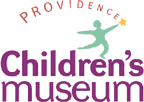
Project Proposal
Elizabeth Smith, Maria Fusaro, & Nigel Cordeiro

Contact
Find out who is involved with this amazing project
Proposal
Our current project proposal.
CS
92
The course home page.
After touring the Providence Childrens Museum, talking to the
projects sponsor, and seeing the tentative exhibit design, our team has
come up with the following general idea:
Goal 1: To help the
children understand that they are the ones who can directly impact what
goes into the landfill by making the best choices.
This software
will be part of the larger exhibit on recycling and reusing. Because
the goal of the new exhibit is for children of ages 6-10 (and their
adult caregivers) to feel empowered to police their communities concerning
waste, we thought it best for our software to fit into the overall
. Planet Police. theme by creating a detective/sheriff character to
guide them through the adventure as they pretend to be a member of the
planet police. That way, with their newly-made sheriff ID badges
made in another area of the exhibit, there will be an automatic connection
to the program to begin with. The role of the software is not really
to teach alot of facts, but to give the museum visitors a chance to try
out some problem solving strategies and learn some recycling facts in a
fun and incidental way.
Goal 2: To help children trace
the life cycle of an object they purchase in the store. For example,
choosing between a juice box and a reusable container and what would
happen to each i.e. juice box gets thrown away and reusable container gets
used over and over, then recycled.
Goal 3: To help children
understand the things they can do to keep an object out of the landfill -
reduce, reuse and recycle.
Unintentionally, our idea is actually pretty similar to
the original description of . Carmine Santiago meets trash. &
though we haven. t worked out specifics, at this point we plan
on dividing the screen into two frames: a column on the left and the rest
to its right. The software will not be a game, exactly, but it will
be interactive and exploratory.
It will begin with the sheriff emerging from
a house covered by trash, and why is the house covered in trash? Because
the landfill is full. And he/she will say . What a
crime! You, young sheriff, find out what caused this mess!.
And then the main screen will display about five locations (school, home,
grocery store, etc.), and the child can click on any of
these.
The software will use real-life situations
where the children need to make choices about what to do next and
what consequences they can expect from those different alternatives. For
example, given a few alternatives (so in the school lunchroom, does everyone
get individual juice boxes, aluminum cans, or a reusable container
that gets refilled at home?), the child makes a choice and gets to
see its consequences. We don. t want anyone to be able to lose the
game, so this idea is really more of an opportunity for the children to
adjust parameters and see what effects each has. This is where the
column on the left is useful. It will be a graphic representation of
the amount of trash in the landfill, and when a child makes a choice ,
he/she will be able to see how much space in the landfill that choice
saved or used up.
The graphic on the left will help to accomplish
the fourth goal:
Goal 4: To help children understand the
concept of "away" - that throwing something "away" does not make it
disappear. For example, that throwing a juice box in the trash can
does not make it go "away," the trash is dumped into a garbage truck (is
that "away?") which is brought to the landfill (is that
"away?").
Eventually, if the child continues to play, he/she
will be able to visit all of the different locations, and our underlying
point is that everyone caused the mess; it can. t be isolated to
one location. Also, the choices the child makes directly affects the
earth, for better or for worse. The good news is that the children
can make a difference, and this software will help them to realize
that.
In
designing the software, we want to limit the amount of text
in our program and keep the messages simple. For the child interested
in reading text passages, we could include a link to . more
information. at certain points during the program. We would like to
use visuals to indicate the repercussions of the choices that the children
make, which could include computer generated graphics or images of
"real-life" landfills and recyclable objects.
The authoring tool
that will be used for this project will be one that allows us to use both
computer and "real-life" graphics, to include sound and music, and, most
importantly, to create a program that is flexible and easy to use.
The three of us will be working closely with Robin at the museum, along
with our TA, Will, to ensure that the software we develop is a high
quality product that will meet the educational and (entertainment?
"fun-having"...help!) needs of the museum visitors. We will know
that it is successful when children use it from beginning to end and, in
the process, reach the main objective of the project: You have many
choices about what you buy and what you do with it when you're
finished. Making informed choices can make trash less of a
problem.